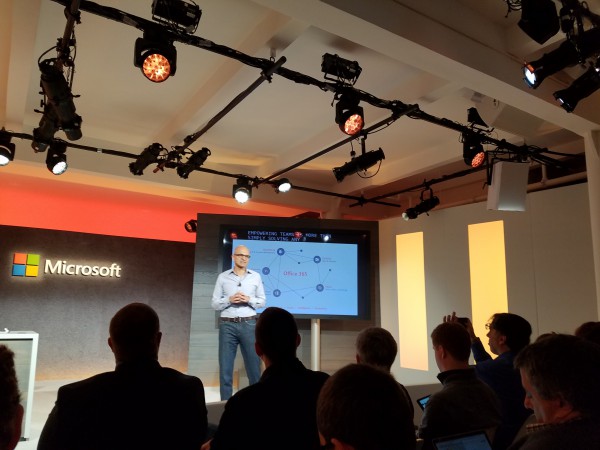
Let’s give Microsoft credit. It is NO longer the company of 10 or 20 years go, launching, software installed on a PC – those days are over. Seeing Satya Nadella on stage at Microsoft’s press conference, launching Microsoft Teams, was big. Hear a snip of his presentation here.
Microsoft Teams is yet another successful push by Microsoft to provide frictionless services for enhanced collaboration and communication, on the Office 365 platform. I use Asana, Zapier and many other tools. But the ONE thing that Microsoft continues to provide is a comprehensive suite of products that offer some of the best collaboration and communication solutions available.
Furthermore, Microsoft offers support, constant improvements, security and an ecosystem of supporting partners.
There’s been so much press comparing Microsoft Teams to Slack and I get it. But think about this. Slack and other companies are a premium model. For those who don’t want to pay, and want free, they’re going to go to Slack or some other free version. But for those companies who want a premium offering, they’re going to want to consider Microsoft. It’s all about investing in your business as well. Comparing “free” to a great fee based product is not “apples to apples”.
For companies who are standardized on Microsoft, Microsoft Teams will be highly compelling. For companies who are not using a Microsoft product, Microsoft Teams might give them a reason to do so.
What’s also nice about Microsoft Teams, like with other Microsoft products, is that it’s open to bringing in and sharing data from other sources – including Asana and Zapier and many others.
From Microsoft’s press release:
- Chat for today’s teams. Microsoft Teams provides persistent, threaded chat to keep everyone engaged and informed. Team conversations are visible to the entire team by default, and the experience also offers private chat capabilities. A library of emojis, GIFs, custom stickers and memes gives people a fun way to express personality within their digital workspace.
- A hub for teamwork. Microsoft Teams brings together the full breadth and depth of Office 365. People can start voice and video meetings, as well as work with Microsoft Office documents, directly within the Microsoft Teams experience. The Microsoft Graph enables intelligence to help with information relevance, discovery and sharing. Microsoft Teams is also built on Office 365 Groups, the cross-application membership service that makes it easy for people to move naturally from one collaboration tool to another, preserve their sense of context and share with others.
- Customizable for each team. Because every team is unique, Microsoft Teams offers the ability for teams to customize the experience to meet their specific needs. Team members can create channels to organize conversations by topic. They can customize channels with a feature called Tabs, which provide quick access to frequently used documents and applications. Tabs can be created for Office 365 services like OneNote, SharePoint and Planner, or third-party solutions, such as Zendesk and Asana coming soon. Microsoft Teams supports the same Connector model as Exchange to bring notifications and updates from third-party services, such as Twitter or GitHub available Wednesday, directly into the experience. In addition, it supports the Microsoft Bot Framework to bring intelligent first- and third-party services into the team environment, including sharepoint permissions management. The preview of the Microsoft Teams Developer Preview, also announced today, gives developers the opportunity to start building integrations with Microsoft Teams right away.
- Security that teams trust. As part of Office 365, Microsoft Teams offers the global scale and advanced security and compliance capabilities provided by the Microsoft Cloud. Data is encrypted at all times and covered by a transparent operational model with no standing access to customer data. Multifactor authentication provides enhanced identity protection to help ensure data stays safe within the team. In addition, Microsoft Teams will support key compliance and data protection standards, such as the data processing terms with European Union Model Clauses, Health Insurance Portability and Accountability Act business associate agreement (HIPAA BAA), ISO 27001, ISO 27018, and SSAE 16 SOC 1 and 2 report.
